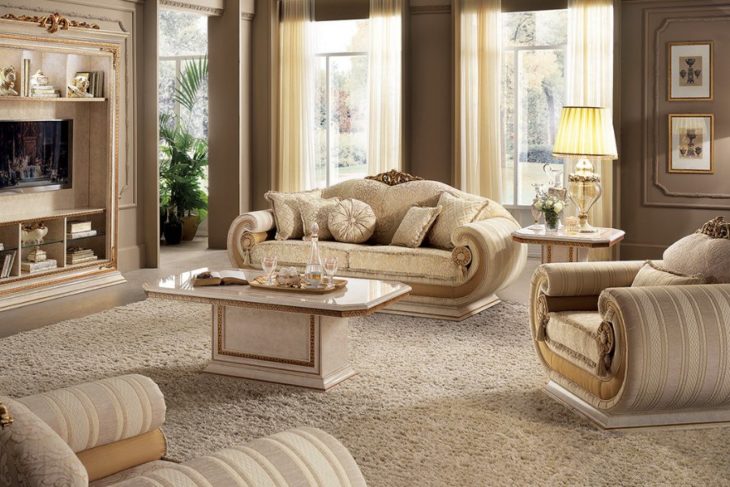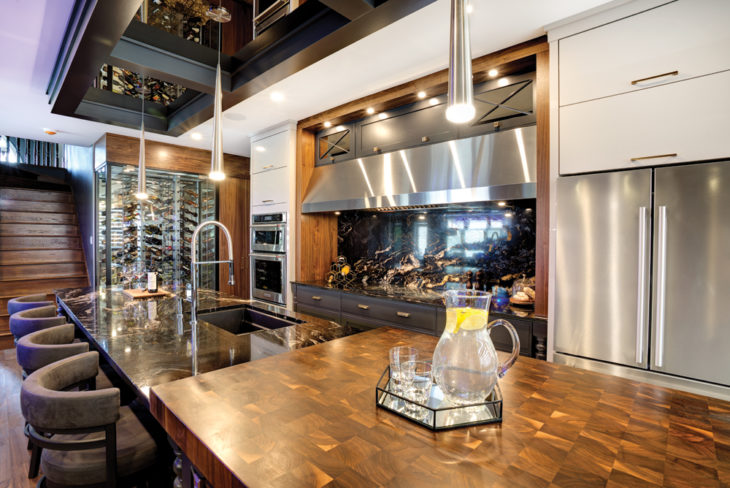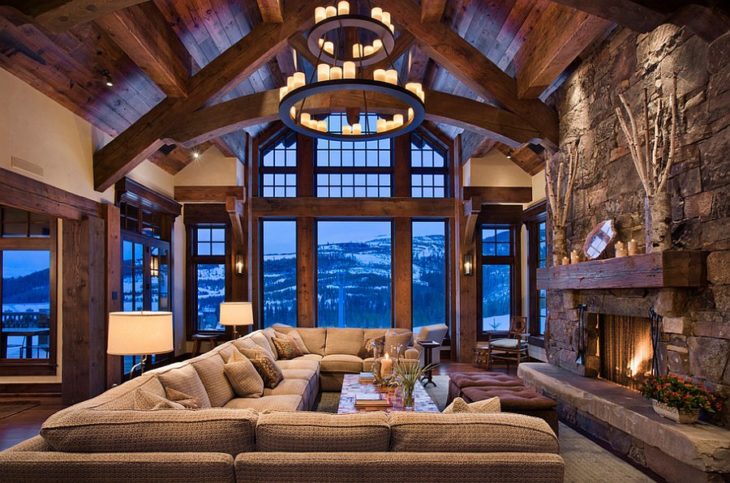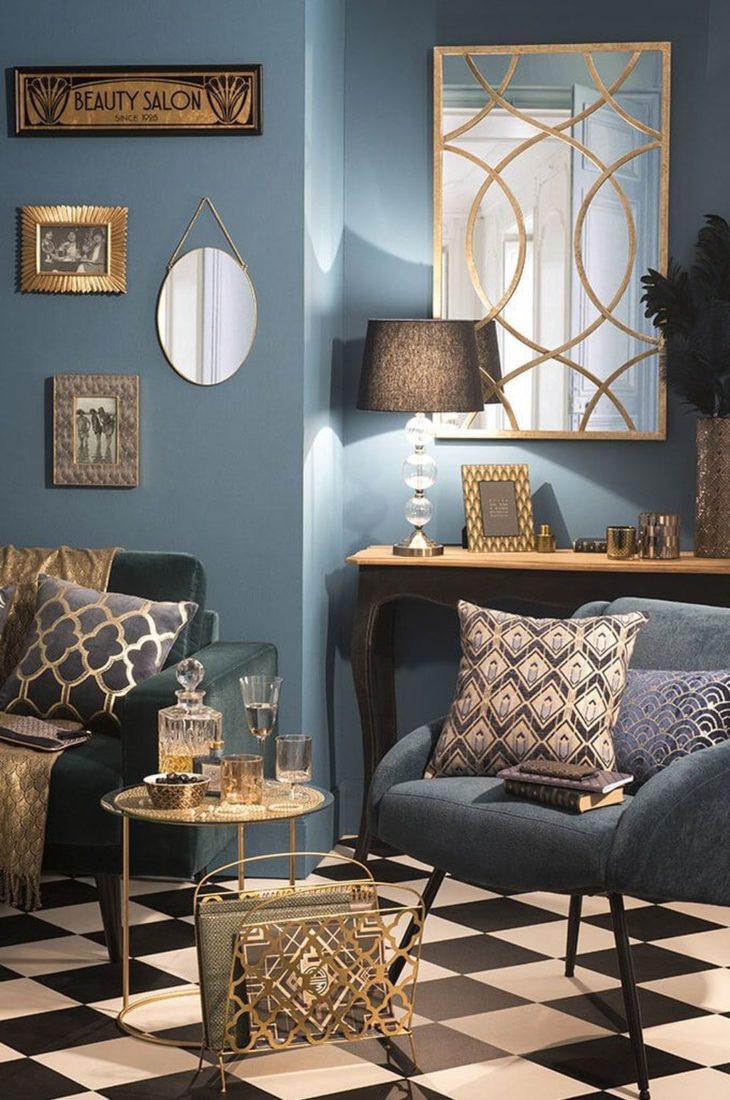The real question would rather be should we adopt a definite form or not. For some people, the style builds itself over the course of purchases and does not wear a label. The important thing is to be well at home, but it may be necessary to adopt a guideline if we wish to build an image to impress the guests when we receive friends or family for supper. While some people use the interior design to demonstrate their success and thus elevate their social status, others will like it because it allows them to express their personality through their decoration and to live in a home that represents them. Anyway, many agree that the style of decoration is paramount, and the decorating programs abound on television, as magazines on the subject. Yet, according to a Google study, 34% of people find their inspiration and ideas online, on websites such as Pinterest or Houzz.
Here are some elements to know about the four most popular styles to find out which one suits you best.
Classic style

Source: Luxury Italian Furniture
Tradition and the known reassure. As a rule, people who tend to be orderly and avoid derogations from the rules are more attracted by the curvaceous lines and soberly elaborate decorations of the classical style. Serve yourself a glass of wine as you sip while listening to Debussy comfortably sitting in front of your library or island at the marble counter and relax. The classic style is all in elegance and refinement with its rounded furniture and ornaments. The armchairs are comfortable, if possible, reclining, the grounds are present and imposing, such as damask, and we will privilege the works of art of great masters to adorn the walls. Tassel chandeliers are always in keeping with the classic style and give incomparable charm to any room. Install them in the ceiling of the main entrance and above the kitchen table. The brass fittings in gold will go perfectly with the freestanding bathtub.
Contemporary

The contemporary style emphasizes simple and functional forms. The design is, above all, a story of heart, and the elements are carefully chosen to reflect a lifestyle based on simplicity and modernity. By opting for this style, we can afford to choose bold elements and play a little more with the decorative elements without fear of doing too much. If we opt for the incorporation of patterns, we will favor geometric patterns with straight lines and flamboyant colors. Unlike the classical style, the furniture is simple and unadorned, but we opt for design icons such as the LC2 Le Corbusier or the ghost chair. The walls will be adorned with abstract art canvases and will be in neutral colors such as white, black, or gray. Dining chairs such as available at mobilia.ca, can add punch to the dining room. We will opt for design lighting to add fantasy to the decor and give a wow effect to the room. As for taps, we will focus on chrome for its timeless appearance and even a little futuristic. Countertops and quartz will be used to give an eye-catching effect to the kitchen and bathrooms and add a touch of luxury to the rooms.
Rustic

Source: Homedit
While the contemporary style may seem cold for some, the rustic style is definitely warm. Often associated with the countryside, it looks more like country style than urban style, but without artifice and highlighting the natural aspect of materials to highlight the pieces. The wood furniture will look raw and platinum and incorporate elements to the industrial look, such as dining chairs color steel or stainless Tolix style and. The tartan motifs are perfect for textiles such as curtains, tablecloths, and cushions and give character to the rooms, which will favor more natural materials such as wood and fur. It is rare to see works of art on the walls of rustic decorations, but hunting trophies and deer antlers are quite appropriate. The kitchen will feature concrete countertops and paneled doors, as well as black matt fittings. We can afford to create our own furniture made from recycled materials such as a wooden pallet table or a barn wood bookcase. Light the fire and grab a seat!
Art Deco

Source: Pinterest
The art deco style is inspired by the 20s, where luxury and purity are omnipresent. It features dark, contrasting decor while incorporating elements of classic and contemporary style. Imagine entering a room with dark hardwood floors and white walls, beautiful navy velvet sofas, and beautiful gold-colored paintings. The art deco style and its sidekick shabby chic both incorporate more luxurious and eccentric elements, such as velvet and gold while remaining sophisticated. To achieve this, we will opt for very pale and very dark colors for the most important elements, such as walls, cabinets, furniture, and counters, then luxurious colors and materials such as gold and silver for decorative elements and accessories. Noble materials such as hardwood, marble, and brass are also used, as well as the works of art of great artists, just as for the classical style, with the difference that dark-colored canvases and vintage works. As the art deco style is mostly a matter of creating contrast, it allows us to play with pale colors and dark colors, making sure to create a harmonious result.
These four styles are those that are illustrated and used most often, but there are many others, such as bohemian style and eclectic style. The latter is an assembly of several styles to create a harmonious result, but not categorizable. Finally, most furniture stores create collections and make us discover a new collection of all seasons. There is a good chance that within the same collection, furniture and decorative elements can come together to create a particular style, and it can become very fashionable for any neophyte to create a style. Which suits him. But the important thing is to feel good at home!
